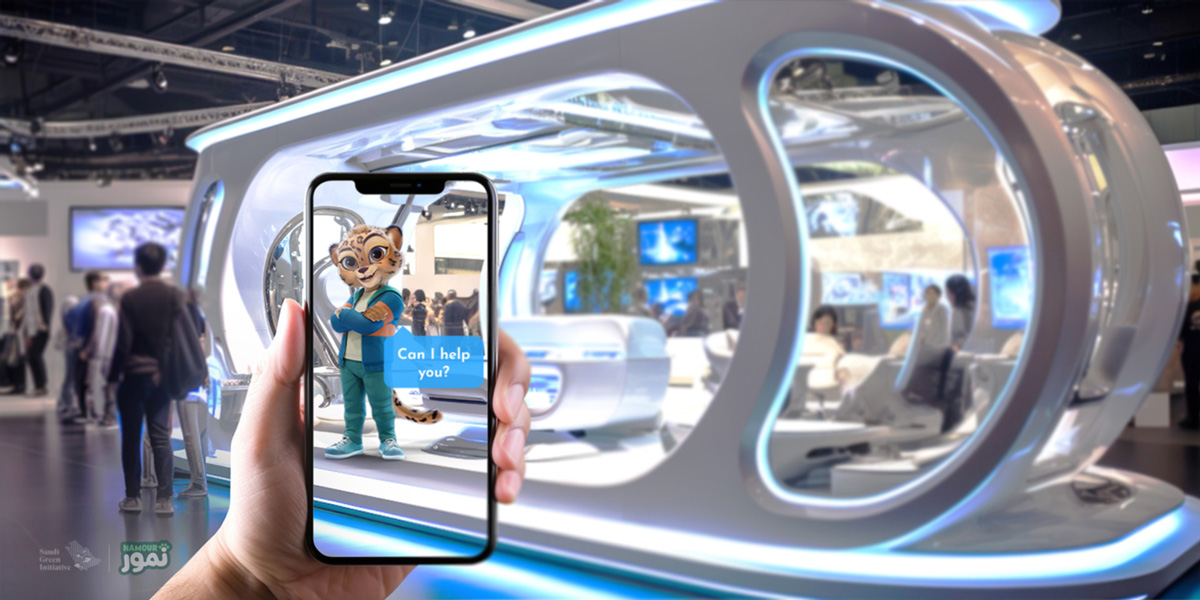
At one glance:
- Interactive mascots are AI-powered brand characters that help brands interact with their customers in real-time, across both digital and physical channels.
- They leverage advanced AI models and real-time systems to better understand user input, adapt responses, and deliver personalized interactions to address customers’ needs and improve customer satisfaction.
- Businesses can deploy these mascots in a wide range of online and offline channels, including websites, social media, live events, exhibitions, and omnichannel customer experiences.
- Well-designed, relatable interactive mascots can increase engagement, strengthen brand presence, and also deliver long-term business value.
Today, users expect interactive content because static media no longer holds attention. According to a Limelight study, 91% of consumers confirmed that they would feel more optimistic about a brand after actively participating in a brand’s event or experience. That’s why brands across industries have started using interactive mascots to engage audiences, turning them into active participants rather than passive viewers. These mascots can respond, move, speak, and adapt in real time, making them ideal for a range of use cases. It’s also worth noting that another study by Market.us Scoop reports that 66% of marketers say interactive content excels at boosting engagement.
In this blog, we’ll examine interactive mascots in depth and explain how Dream Farm Agency can help your business create one. If you’re wondering how they differ from their traditional mascots and where they deliver the most impact, keep reading. Furthermore, we draw on our team’s expertise to explain the core technologies behind interactive mascots, everyday use cases across physical and digital environments, and what brands should consider before investing in one.
What Exactly is an Interactive Mascot?
It’s a brand character that goes beyond static visuals and can engage users through real-time interactions enabled by sensors, motion, or digital responses. This creates a personalized experience for each individual that is far more effective than outdated one-way communication. Interactive mascots are designed to react and respond to user actions, from gestures to clicks, to develop a deeper emotional connection that delivers measurable gains.
A century ago, brands relied on static mascots. The rapid advancements in technology over the last few decades have transformed brand mascots. Today, 3D animated mascots have become the industry standard, reflecting the ever-changing expectations of audiences.
Now, let’s define an interactive mascot.
An interactive mascot relies on active user participation with real-time response, and it can be used in any medium.
The creation of interactive mascots has become a key strategy in modern brand marketing. Visitors play a crucial role in the interactive mascot’s functionality, empowering them to achieve personalized outcomes and make emotional connections.
Platforms hosting these mascots are multisensory, responsive to touch, and capable of capturing body movements and recognizing facial expressions. They will be used in interactive displays, interactive walls, AR platforms, holographic projections, websites, etc.
Imagine a user standing in front of a digital display, waving to the mascot. In a split second, the mascot responds by waving back, creating a truly engaging experience.
Lastly, integrating interactivity into already animated mascots will result in a more personalized user experience, which is fascinating.
Therefore, in essence, an interactive mascot:
- Requires active participation from users.
- Offers a totally personalized experience.
- Reacts in Real-time.
- Is multisensory.
Keep all these in mind, and let us make something clear. Interactive mascots are not the same as virtual assistants.
These two brand assets often overlap; however, looking closely, we understand there are significant differences between them.
Interactive mascots are designed to increase brand engagement, provoke emotional connection, and gain user interaction for various marketing objectives. On the other side of this comparison, we have virtual assistants that are typically task-oriented.
Assistants function like prerecorded videos. They provide information when a customer presses a button on the display, but they cannot respond to new prompts or user actions.
Mascots have backstories and their own unique characteristics, which allows them to foster a deep connection with the target audience.
If you’re thinking about adding a mascot to your communication plan, our team is here to help.
With over 10 years of experience and the development of more than 2,500 characters, we’ll guide you through every step to unlock the full potential of your new team member!
Learn more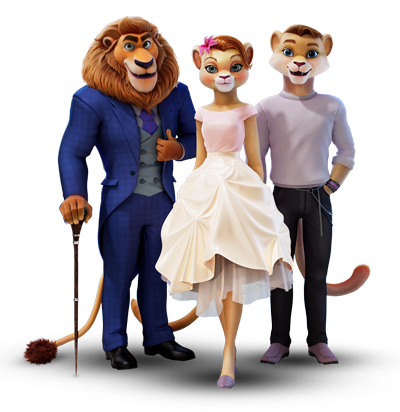
Let’s compare interactive and traditional mascots using a table:
|
Aspect |
Interactive mascot | Traditional mascot |
|
Core format |
Designed for two-way communication | Fixed, static character |
|
Response mechanism |
Uses sensors and advanced technologies to gain situational awareness and adapt | Predefined behavior with no adaptability |
| Typical tech stack | Real-time pipelines or detection-based interactivity |
Design and content creation |
| Personalization level | Significantly high |
Limited |
| Creation and upkeep complexity | Higher than traditional mascots |
Lower than interactive mascots |
Interactive Mascots by Medium
There are three types of interactive mascots based on the medium:
Static-interactive
These are mostly similar to traditional mascots and operate within predefined rules and scripted behaviors, while still responding to user input without human intervention.
Chatbots, automated social media replies, as well as branded reply accounts on platforms like X/Twitter to answer questions, are usually this type of interactive mascot.
Although limited in flexibility and functionality, the static-interactive type scales well and is a cost-effective solution for consistent brand engagement.
Live-interactive
Live-interactive mascots can dynamically respond to audience interactions, which distinguishes them from other types. Businesses use this relatively more modern type for mascot-led live streams, live social content, or avatar-based VR encounters. VTubers on Twitch are a good example of live-interactive mascots.
We recommend this type for businesses that aim to build an emotional bond with their target audiences, as its interactivity conveys a feeling of talking to a human while also being immersive and spontaneous.
Spatial-interactive
Such characters consider the user’s location, movement, or environmental context in responding. They exist in physical or augmented spaces and can effectively blur the line between digital and physical worlds.
AR filters on social platforms, holographic mascots at events in retail spaces, and location-based interactive experiences in malls or exhibitions are all categorized as spatial-interactive mascots. It’s worth noting that the highly immersive experience they deliver can make brand interactions more memorable and experiential.
Still unsure about the impact of interactive mascots? The next section explores this in more detail.
Why Brands Are Investing in Interactive Mascots (2025 Trends)
A variety of reasons justify investing in interactive mascots in 2025. These include improved engagement, stronger emotional connections, and increased brand awareness in a crowded digital landscape, which are among the major benefits of these characters. Simply put, interactive mascots are not just visually appealing but also help brands cut through the noise, strengthen loyalty, and serve as versatile assets across social media, live content, and digital experiences.
Below is a closer look at each benefit:
- Stronger audience participation: Interactivity boosts engagement and increases time spent with content.
- Consistent brand voice at scale: Interactive mascots reinforce brand consistency across channels.
- Higher memorability: Immersive experiences improve long-term brand recall.
- Cross-channel adaptability: New technologies allow a single mascot to operate across platforms.
- Data-driven insights: User interactions provide insights into user preferences and behavior.
- Differentiation from competitors: Interactive mascots help brands stand out as industry innovators.
Next, we discuss the diverse applications of these characters.
Exploring Interactive Mascots Use Cases
Leveraging new technologies requires innovation and creativity. Hence, to take advantage of interactive mascots, brands should think outside the box and find revolutionary ways to use them.
In this section, we will give you some ideas about utilizing interactive mascots.
Digital Displays in Exhibits
These days, displays at modern exhibitions often integrate multiple sensors and cameras that enable interaction with attendees.
Brands can leverage these advanced systems to go beyond static advertising. Interactive displays help attract attention, guide visitors, and increase booth visibility in crowded exhibition environments.
Businesses can use these displays to showcase an animated, AI-powered mascot. The purpose is to draw attention to the display, promote your brand, and support broader marketing objectives.
In summary, interactive mascots are capable of:
- Real-time conversation: Attendees can ask questions, chat casually, or engage in topic-specific discussions.
- Wayfinding and visitor guidance: The mascot can direct attendees to specific booths, stages, or zones, helping visitors navigate the exhibition floor efficiently.
- Context-aware engagement: Embedded sensors capture body movement and proximity, allowing the mascot to react to gestures, posture, and user presence in real time.
- Brand-led interaction: Conversations and guidance are aligned with brand messaging, ensuring engagement supports specific marketing goals rather than generic interaction.
This is how a simple display and a conventional character create interactive touchpoints that can positively affect the visitor experience.
3D Holograms in Physical Events
Ribby, the holographic mascot of the 2025 South Florida Fair, is a great example of this use case. The marketing team placed this mascot at the event’s entrance installations at the venue. Their goal was to immerse and engage attendees as part of the fair’s theme, Imagine the Future.
You likely know what 3D holograms are and have seen some before. Holograms have been used in marketing and entertainment for years, including for mascots and virtual brand representatives. For example, companies have already employed holographic technology for mascots at events or promotional displays, so it’s not an entirely novel concept.
Imagine the potential of installing the necessary infrastructure at physical events to project your brand mascot as a hologram. The possibilities are exciting.
There can be places where your interactive mascot pops up and engages with visitors, answering their inquiries, explaining different topics, etc.
This allows your brand mascot to serve as an effective promotional tool, engaging and attracting a broader audience.
Advertising in Online Games
Gaming is more popular than ever nowadays. Therefore, online games such as Roblox and Fortnite are great spaces to use your interactive mascots with the goal of advertising your brand.
If your branding principles and guidelines allow, consider some of these games that host your target audience to showcase your interactive mascot, increase brand awareness, and accomplish other marketing milestones.
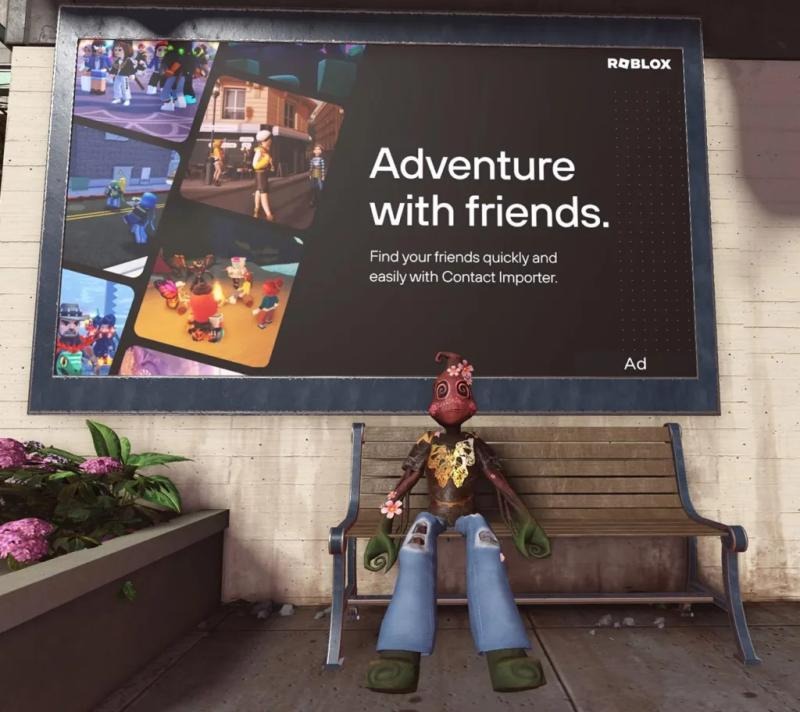
Imagine the possibilities of creating exclusive in-game content, like skin packs, emotes, dances, accessories, and sidequests, with your mascot at the center. This is a chance to inspire and engage your audience in a whole new way.
Moreover, hosting live events with lots of attractive elements inside the game provides your brand with the chance to turn heads toward the mascot and the brand at the end of the day.
A few years ago, Travis Scott hosted a live concert in Fortnite that was genuinely captivating. Review that concert as a successful case study to find out how to plan for excellent live events.
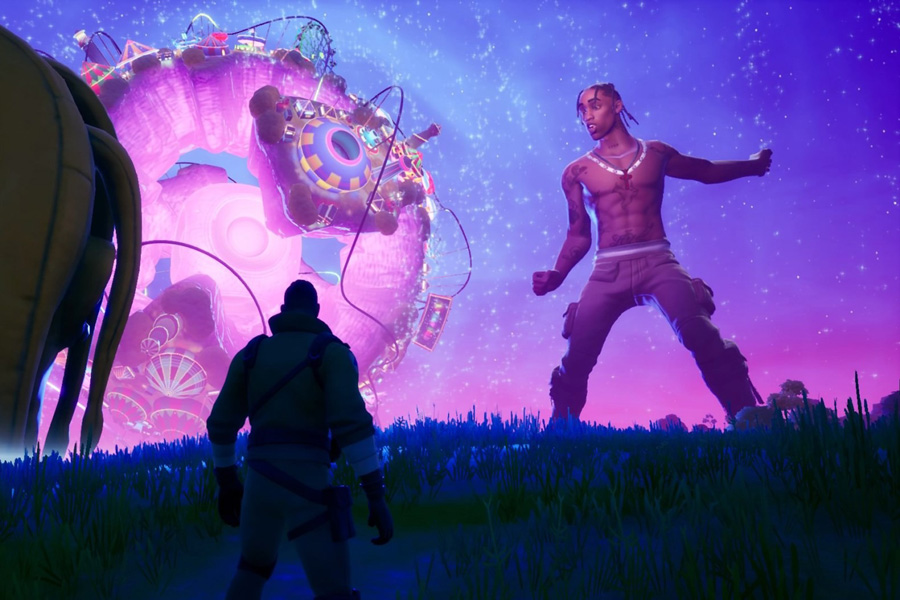
The Hybrid Model: Evolving from Mascot to Virtual Influencer
Interactive mascots outperform traditional ones in terms of functionality. While the main role of the latter is to represent a brand, interactive mascots can function as influencers, building an ongoing presence across digital channels.
This means they’re not necessarily limited to campaigns or events. On the contrary, they’re considered semi-autonomous brand figures who have their own voice, routines, and audience relationships. In effect, brands create an exclusive figure who acts on behalf of the business across various platforms.
Key attributes of these modern influencers include:
- Social autonomy: They interact with audiences autonomously using predefined rules and AI.
- Lifestyle content: Everyday and aspirational content make mascots feel more human and less like ads.
- Collaborations: Collaborations help mascots build credibility and reach new audiences.
- Asset value (IP): Interactive mascots are now proprietary intellectual property, enhancing long-term value.
Interactive Mascots for Customer Service
People are more interested in video calls now than ever. When a brand offers video-based support and purchasing through this channel, it immediately stands out from competitors relying on traditional contact methods.
However, staffing human representatives to handle video calls around the clock is often impractical for small and medium-sized businesses. A scalable solution is to use an AI-powered interactive brand mascot rather than relying solely on human agents.
Thanks to recent advancements in artificial intelligence, interactive mascots can now engage in human-like, real-time conversations.
Large Language models (LLMs) power these interactions and help the mascot to understand intent, generate contextually relevant responses, and sustain natural dialogue throughout a video call.
Beyond conversation, AI-driven mascots can analyze user sentiment in real time and adjust their tone and responses based on emotional cues such as frustration, hesitation, or confidence.
Over repeated interactions, the intelligent system can also build personalized learning paths, allowing the mascot to remember preferences, tailor responses, and improve support quality for returning users.
As a result, when a client initiates a video call, your interactive mascot can promptly respond to their inquiries or address their issues.
This reduces the need for 24/7 human specialists and results in significant long-term cost savings.
Using Interactive Mascots in Education
Online educational platforms can harness the power of their interactive mascots to make learning more enjoyable. Research has shown that the more fun students have, the more they interact with the lessons, inspiring educators to create engaging and interactive learning experiences.
Moreover, interactive mascots allow educators to provide students with more personalized planning tailored to their preferences. Altogether, a more enjoyable experience is possible with these interactive brand representatives.
With a well-thought-out strategy, you can add a touch of gamification to the educational program and define the interactive mascot as the primary character of the game, giving quests to students and offering them rewards in exchange for completing tasks.
Lastly, proper usage of interactive mascots facilitates social interaction among students, resulting in building a community where attendees discuss with each other and share knowledge.
Utilizing Interactive Mascots in Urban Advertising
Some modern cities have established the infrastructure needed for interactive elements, at least in crowded areas. If your marketing strategy permits, employing your interactive mascot across various city displays offers another valuable opportunity for your brand.
They can be featured on large digital billboards, responding to audience engagement with gestures like blinking, waving, and sending virtual greetings. Or if there is anything you need to announce to the public, your interactive mascot can do it on big screens where many people are commuting in front of them.
Moreover, brands can leverage smaller displays on the ground and lower levels to interact with people directly. As said above, these displays, equipped with sensors, analyze emotions and movements to offer personalized experiences, answering questions and reacting to every action taken.
Taking Advantage of Interactive Mascots as Virtual Retail Assistants
Earlier in this blog, we discussed the differences between an interactive mascot and a virtual assistant. However, in some circumstances, an interactive mascot can also act as a virtual assistant within an omnichannel brand experience.
As discussed, interactive mascots can deliver a unified experience across various online and offline platforms. In an omnichannel setup, this translates into the interactive mascot performing as a single, intelligent brand representative that accompanies users across multiple touchpoints, from websites to in-store displays, while maintaining context and continuity.
Retailers can entrust their interactive mascots with guiding customers, especially in online shopping journeys. This not only showcases a forward-thinking approach but also opens up a world of possibilities regarding consistent guidance across channels, rather than isolated, one-off interactions.
The process works as follows:
First, interactive mascots can provide customers with personalized offerings based on previous behavior, preferences, and interaction records. With the help of artificial intelligence, the mascot adapts over time, creating personalized learning paths that refine recommendations with each interaction.
For example, in fashion-related businesses, the mascot can help visitors customize outfits and refine styles to create a one-of-a-kind appearance.
This table explains how AI supports omnichannel interactions:
|
AI Capability |
What It Does in Practice | Impact on User Experience |
|
LLM-driven conversation |
Understands user intent and responds with awareness of context across sessions and channels |
Feels like talking to a consistent brand representative, not a static or impersonal system |
|
Sentiment analysis |
Detects emotional signals such as confusion, frustration, or confidence |
Adjusts tone and guidance in real time to provide better answers and keep conversations effective and natural |
|
Personalized learning paths |
Learns from past interactions, preferences, and behavior over time |
Delivers more relevant recommendations instead of generic answers that are not tailored to user preferences |
Overall, interactive mascots can fuel omnichannel strategies by functioning as an end-to-end solution that delivers personalized guidance across digital and physical channels.
Offering Astonishing XR Experiences
Brands that use VR and AR technologies can utilize their interactive mascots to foster a more engaging and immersive user experience.
Imagine providing VR headset users with your interactive mascot standing at the forefront of your physical store, welcoming visitors with a warm smile.
Moreover, in virtual worlds like the Sandbox, the interactive mascot can represent your brand perfectly on your behalf, answering players’ questions and hosting virtual events occasionally.
In AR applications, interactive mascots are more than just a visual element. They pop up when a user directs the phone camera to a QR code and the mascot appears as an AR character, guiding and assisting users in achieving their goals. Once again, they can react to users’ actions and address their concerns in multiple ways.
Guiding Customers in Physical Stores
Finding goods in gigantic stores is usually challenging for customers. Brands can help clients find what they need quickly by using their mascots, which are also interactive.
The AI integrated into these interactive mascots is responsible for providing customers with the necessary information and helping them find what they need.
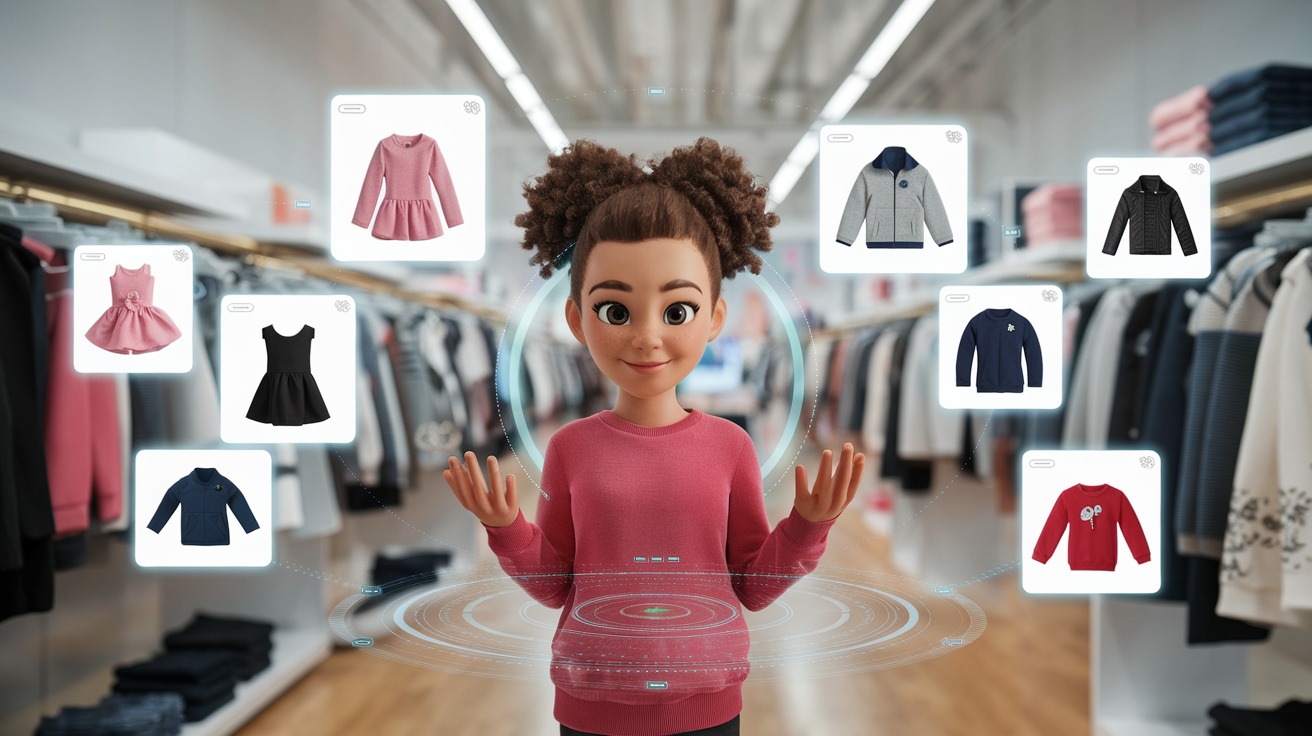
3D holograms can also be beneficial in this regard. Their infrastructure can be implemented in different parts of the physical store, ready to help visitors overcome challenges.
These are some of the most common use cases of interactive mascots. In the following section, we will discuss the process of creating an interactive mascot.
Interactive Mascots Technology and Development
First and foremost, a comprehensive brand review is indispensable. The mascot is not just a symbol; it’s a living representation of your brand. To ensure it does justice to your brand, everyone involved in the creation process should have a clear understanding of the brand’s goals and values.
Keep in mind that AI models play a vital role throughout all phases, enabling analysis, decision-making, and real-time interaction that would be difficult to achieve at scale without them.
Before moving forward, review the top brand mascots to get a clear picture of the broader landscape.
Next, we outline the key steps of developing an interactive brand mascot.
1. Build a Story World and Character Identity
The heart of any successful interactive mascot lies in its storytelling. It’s not just about design or functionality—storytelling creates a meaningful emotional bond between the audience and the mascot. Engagement and longevity are rooted in the narrative that shapes the character. Audiences are drawn to mascots because of their story—their challenges, growth, and experiences—rather than just their actions. This emotional bond is the key to driving engagement and building a loyal following.
Effective storytelling starts with a clear and relatable backstory. Answer the following questions to establish a solid foundation:
- Who is the character?
- What is their purpose?
- What motivates them?
Once defined, the mascot’s voice, personality, and tone must consistently reflect the brand’s values to build authenticity and trust.
By analyzing audience behavior, content performance, and sentiment across similar characters and campaigns, artificial intelligence can support the storytelling process. The results of these analyses help teams guide the narrative in the right direction, refine character traits, and identify which elements resonate emotionally with the target audience. In other words, AI informs the story’s direction, while humans still have full control over creative decisions and retain ownership of the final narrative.
A key factor in maintaining engagement is the mascot’s ongoing journey. Audiences are drawn to characters that grow and evolve. Whether the mascot overcomes challenges, celebrates personal victories, or hits new milestones, this progression makes the story dynamic and engaging. It invites audiences to follow along as part of the mascot’s journey, encouraging long-term interaction and loyalty.
By integrating storytelling across the mascot’s interactions—whether through social media posts, videos, or immersive experiences—audiences feel connected as if they’re part of the story themselves. This approach fosters continuous engagement, making people return to see what happens next.
It should be noted that, in addition to having this stage in all of our brand mascot development projects, we also provide storytelling services for brands to create brand stories or advertising campaign narratives.
2. Crafting the Mascot’s Visual Identity
The visual design of an interactive mascot is critical—it shapes the first impression and how audiences perceive and connect with the character. Every design decision, from facial expressions to clothing, should resonate with the target audience and align with the brand’s message.
If your brand promotes fitness products, the mascot should physically reflect an active, healthy lifestyle. This could mean an athletic, toned character that embodies fitness, reinforcing the product’s credibility. Likewise, if the brand focuses on family-friendly dining, the mascot might take on a more humorous or approachable look—perhaps a jovial, food-loving character who delights in sharing relatable, funny food experiences. This type of design helps create a friendly, warm connection with the audience.
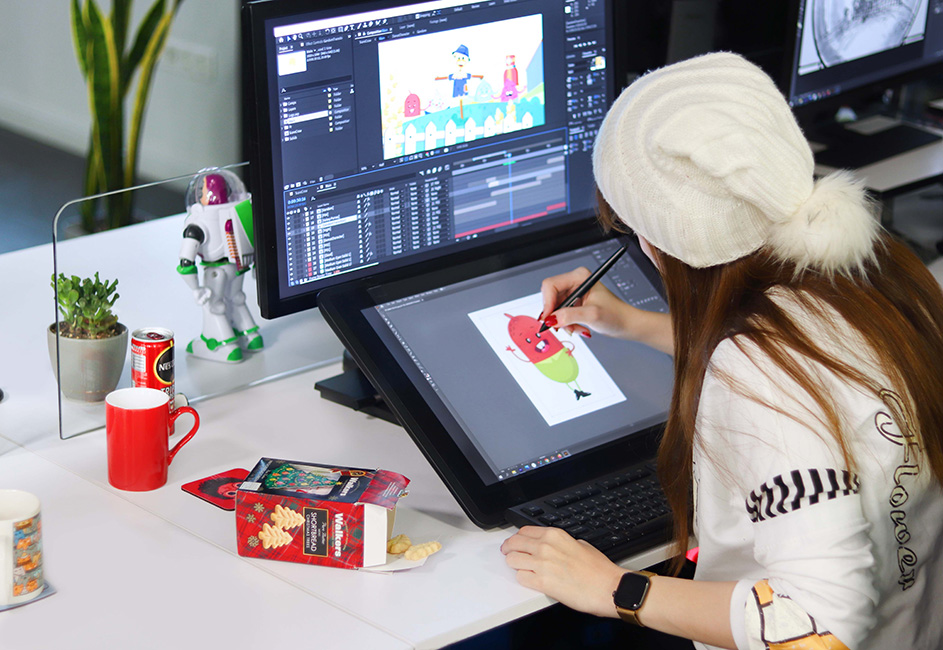
By customizing the mascot’s appearance to match both the product and the audience, we ensure that the visual design enhances the brand’s message and encourages engagement. Every detail—from facial features to wardrobe—plays a role in creating a character that is visually appealing and emotionally relatable.
A good visual design requires thorough analysis of audience demographics, visual preferences, and engagement patterns across similar brand characters. Our professional designers at Dream Farm Agency use related insights from AI models to define early visual direction and refine visual elements and facial expressions. As a result, the mascot’s final appearance is data-driven rather than based on guesswork.
In more advanced cases, mascots may also include subtle design elements that adapt to audience preferences or reactions, further strengthening engagement by making the character feel even more connected to its followers.
3. Animating the Brand Mascot
Animating involves modeling, rigging, and designing its movements and reactions in various situations. Remember that an interactive mascot must respond in real time, so smooth gesture movement is essential.
Several technologies play a crucial role in this phase, including motion capturing and gesture designing. Software programs like Blender and Maya are instrumental in this process. In the hands of talented experts, these powerful tools can texture and render the 3D model into moving animation, evoking emotions and setting the stage for an interactive mascot.
Designing poses and facial expressions is also an integral part of this stage. A well-established 3D mascot should be able to convey different emotions in different situations. For example, a state of shock when a user takes an unexpected action or a sense of joy when they praise the brand.
AI supports animation and motion design by:
- Detecting unnatural transitions and motion inconsistencies by analyzing movement data.
- Improving realism and emotional clarity by refining poses and gesture timing.
- Ensuring smooth reactions in interactive conditions by testing real-time responsiveness.
In general, artificial intelligence can enhance results at this stage by reducing iteration cycles while preserving the quality, performance, and emotional precision of the final animation.
Usually, a real actor goes to the studio and performs the needed movement. Afterward, specialists map their movements into the 3D model. By refining technical aspects, the animated version will have smooth, detailed movements that appeal to audiences.
4. AI-Driven Interactions
Incorporating AI into an interactive mascot is essential for enabling real-time interaction and delivering personalized, responsive, and memorable user experiences.
AI-driven mascots can respond dynamically to audience questions or behavior, giving them a more human-like presence. This makes interactions feel personal and immediate, building stronger audience connections.
As discussed earlier, AI technologies are the key elements that make interactive mascots useful. Therefore, specialists leverage multiple artificial intelligence engines for various purposes.
First and foremost, LLMs, or large language models, are needed to understand users’ requests and prepare the correct answers. In fact, LLMs form the foundation that fuels interactivity in brand mascots.
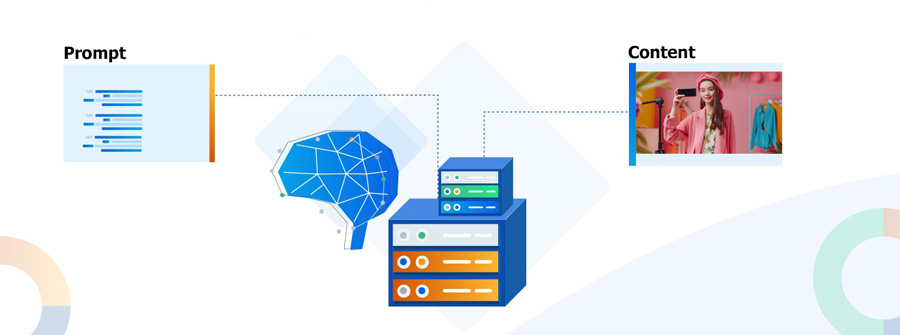
In addition to LLMs, voice engines are required to enable the interactive mascot to speak. These engines give the brand’s agent a voice to communicate with audiences.
Lastly, there are engines dedicated to movement control and enabling real-time interaction with various user actions. Experts define specified reactions for different situations, and movement engines are accountable for forcing the mascot to react correctly to each user action.
It’s important to clarify that an interactive mascot may use a combination of AI engines for speech (using LLMs), real-time gesture recognition (machine learning-based computer vision), and voice synthesis systems.
For example, in the case of unexpected actions, the engine will instruct the mascot to act surprised with appropriate facial expressions, a change in voice, and predefined gestures.
By combining these engines, the mascot will harness AI to its full potential, functioning as an intelligent entity responsible for representing the business.
Since creating interactive mascots is challenging and requires special skills, outsourcing it to professionals is probably the best decision for many businesses.
5. Implementation Across Platforms
The final step is bringing the interactive mascot to life across a variety of platforms. The character can be deployed in numerous ways—whether through social media, interactive displays, augmented reality (AR), or even virtual reality (VR). The goal is to integrate the mascot into media that enhance audience interaction and engagement.
For example, using AR, audiences could engage with the mascot in real-world settings through their smartphones or interactive experiences at live events. In VR spaces, mascots can offer immersive brand experiences that feel more personal and engaging. These applications make the mascot a dynamic part of the customer journey, extending beyond traditional marketing channels.
AI’s role should not be overlooked at this stage. This technology enables mascots to operate consistently across platforms, as explained earlier, by managing real-time responses, contextual awareness, and personalization regardless of the medium.
In fact, AI uses shared interaction logic and behavioral data to ensure the mascot adapts to each platform while maintaining a coherent personality defined during the initial development phases.
By thoughtfully selecting the right platforms and technologies, the interactive mascot becomes a living extension of the brand, driving sustained engagement and fostering deeper emotional connections with the audience.
Overcoming Implementation Hurdles and Ethical Concerns
When deploying interactive mascots at scale, some technical, operational, and compliance-related challenges arise that technicians must handle carefully. In particular, managing costs, ensuring smooth real-time performance, and protecting user data are key concerns. Thoughtful planning, the right technology stack, and clear governance for data usage and transparency help address these challenges.
Budgeting and Cost Drivers
Several factors affect the overall costs of creating and deploying an interactive mascot. That said, there’s no fixed price that applies to all projects.
These are key factors that influence the budget:
- AI complexity
- Animation quality
- Custom hardware requirements
Understanding these drivers helps brands get a clearer picture of overall expenses and plan and secure the needed budget for the entire project.
Our solution:
At Dream Farm Agency, we offer an end-to-end solution, taking full ownership of developing your brand’s mascot from start to finish. This approach is designed to deliver a measurable, positive ROI.
Latency and Performance
Smooth responsiveness is critical, as delays of even a few seconds break immersion and make interactions feel artificial.
To achieve a high level of smoothness, optimized software pipelines must be leveraged throughout the development of the interactive mascot. Furthermore, efficient AI interfaces and reliable infrastructure, whether cloud-based or edge-powered, are crucial.
Choosing the right hardware and software directly impacts the overall quality of the outcome, ensuring the lowest latency and excellent performance.
Our solution:
Skilled developers and designers at Dream Farm collaborate to build the mascot as a full system, rather than just a virtual character. This reduces latency and enhances performance.
Data Privacy, Consent, and Ethics
For enterprise-scale deployments, privacy and compliance must be treated as core requirements when designing interactive mascots.
Collecting facial data, voice inputs, and any interaction logs must be limited to what is strictly necessary to obtain user consent and ensure that data is processed transparently.
Complying with global frameworks such as GDPR and CCPA is also essential to gain user trust and avoid regulatory risks, especially when mascots are in public, immersive, or data-rich environments.
Our solution:
Our team works closely with brand managers to define how interactions must be captured and managed to ensure regulatory compliance. Additionally, by integrating brand strategy, interaction design, and technical execution into the design and development process, we provide our clients with full control over data flows and user engagement.
FAQ
How much does an interactive brand mascot cost?
The cost of an interactive brand mascot depends on factors such as AI complexity, animation quality, level of real-time interaction, and whether custom hardware or immersive technologies are involved. Scope, performance requirements, and the deployment environment also play major roles in determining overall expenses.
What is the difference between a chatbot and an interactive mascot?
A chatbot is primarily designed to deliver functional, text- or voice-based responses, often focused on support or information delivery. An interactive mascot goes further by combining personality, visual presence, and real-time interaction to create an emotional, brand-driven experience rather than just a transactional one.
Can interactive mascots work on mobile phones?
Yes, interactive mascots can run on mobile phones through web-based experiences, mobile apps, or AR features supported by modern smartphones. Their functionality depends on device capabilities, internet connectivity, and the complexity of the interaction and animation.
Are interactive mascots powered by AI?
Many interactive mascots already use AI to understand user input, respond in real time, and adapt interactions based on behavior. As expectations for personalization and natural interaction continue to rise, equipping interactive mascots with AI is becoming inevitable for delivering scalable, intelligent, and human-like experiences.
Can interactive mascots be used on social media?
Yes, interactive mascots can be used on social media to post content, respond to users, and participate in real-time interactions such as comments, stories, or live streams. They help brands maintain a consistent, engaging presence while scaling interactions across platforms.
Need Help Creating an Interactive Mascot?
Interactive mascots are no longer a novelty but a necessity that brands of all sizes will need to invest in sooner or later. Because creating a functional mascot that fully aligns with your branding principles is challenging, we’re ready to handle it from scratch for you. Our experienced designers and developers will collaborate with your team throughout the process to deliver a polished outcome that meets your exact needs.
Key Takeaways:
- Today, brand managers view interactive mascots as long-term brand assets that act as brand representatives across online and offline channels.
- AI is the backbone of modern interactive mascots, enabling real-time conversations, sentiment awareness, and personalization.
- All mascot components must work together as a single system to deliver a fully functional experience.
- Performance, latency, and scalability directly impact user trust and experience.
- When designing and developing an interactive mascot, ethical data handling and compliance must be taken seriously.
What to Do Next:
- Do now: Visit the Blog page on the website and read about other technological advances your business can leverage.
- Learn: Check the Capabilities page on the website to discover how we can help your business with modern solutions.
- Decide: Consult with your team to determine whether your business needs an interactive mascot, then reach out to us through the form on the Contact Us page.
Nikan
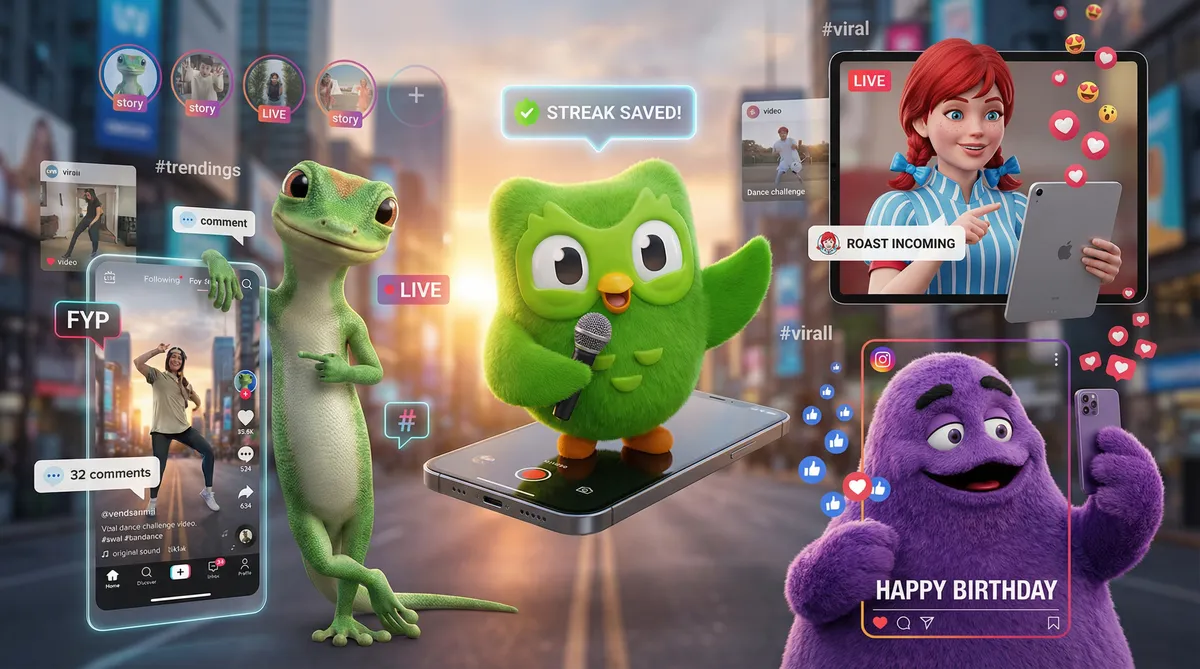


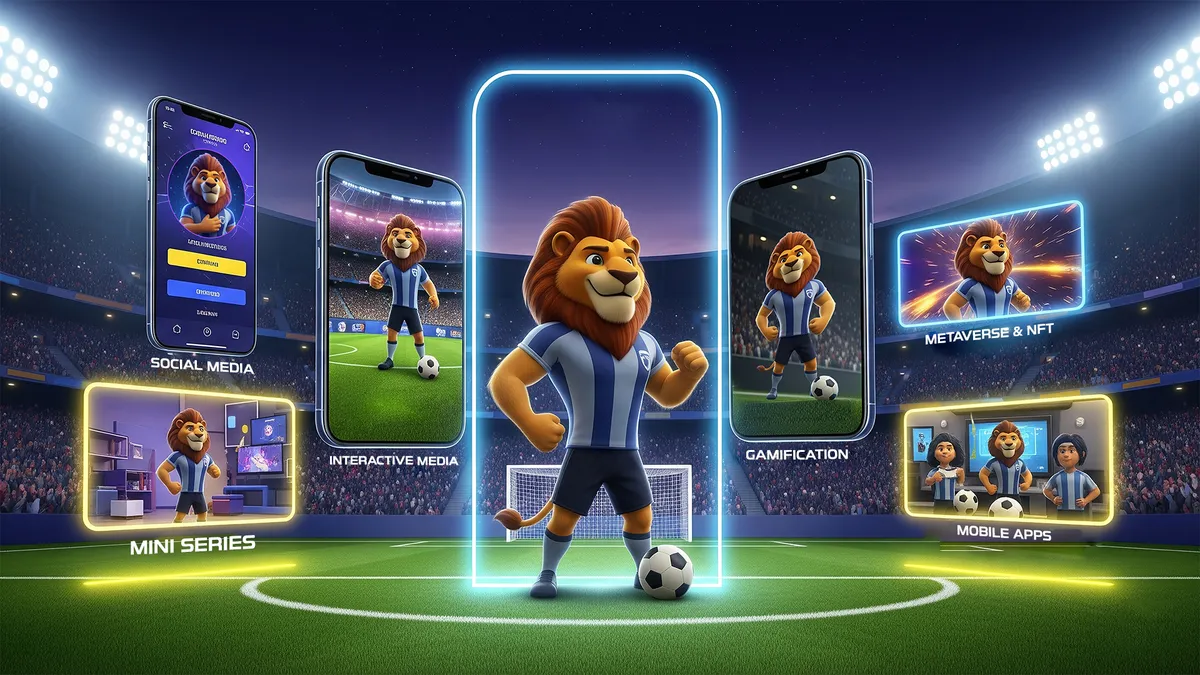
This was such an insightful read! Interactive mascots are a fantastic way to build brand identity and enhance user engagement. It’s fascinating how they can create a more personalized and immersive experience for audiences. Thanks for sharing these valuable insights!
Thank you so much for your kind words! I’m glad you found the insights valuable.
I didn’t realize how much I needed this today—thank you for sharing such helpful and thought-provoking content!